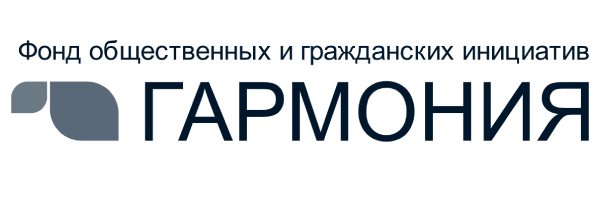About the demoscene
The demoscene is a worldwide non-commercial network of creative minds involved in the making of so called ‘demos’. Demos are computer generated music clips that show what kind of graphic and sound effects can really be done by using high-end computer hardware to its full potential. Demo-making is teamwork. As demos are rather complex any helping hand is welcome. Each scener provides the team with different skills. Graphicians and musicians create suitable pieces of art, the programmers fit all the parts together in an extensive amount of detail work to finally make it an executable program: the demo. The sceners don’t necessarily have to physically meet each other at all during the whole process. Usually they meet in chatrooms and share their latest work over the internet. Most sceners live in Europe but you can find them almost everywhere in the world.
Creating demo programs is a team effort. And since these programs are often quite complex, any help is welcome. Each scener gives the team different skills. Artists and musicians create suitable works, a screenwriter comes up with an idea, programmers put all the parts together to finally make an executable program - demo.
The sceners do not have to physically meet each other throughout the entire process. They usually meet in chat rooms and share their latest work over the Internet. Most sceners live in Europe, but you can find them almost everywhere in the world.
In addition, it is also extremely important to mention that the demoscene not only creates a huge number of "demos", but also creates a mass of music, graphics, photographs, text images (ANSI / ASCII Art), videos, interactive installations and many other artistic and cultural artifacts on various hardware platforms for many decades.
“Basically, the classic media artist asks himself “What kind of technology would I need to realize my concept”, while the demoscener asks “What can I achieve with the hardware in my hands” […] Their aesthetic values are not based on infinite digital flexibility, but on the physical restrictions of computer platforms. That’s why demoscene is not about an idealistic projection of future technology, but about the creative appropriation of present hardware.”
Dr. Daniel Botz at chip flip 2009
UNESCO: Cultural heritage
Demoscene is a UNESCO world cultural heritage!
In 2020, Finnish Ministry of Education and Culture included Demoscene to the list of the national cultural heritage of mankind. This was the first time in world practice that digital culture was included in such a list. A little later, the importance of this culture confirmed Ministry of Culture and Sciences of Germany. And at the end of 2021 to them joined also Poland.
Some demo examples
Demo 2019 "Eon" by The Black Lotus. Running on the 32-year-old Amiga 500 platform. The demo program, which occupies a little over one and a half megabytes of memory (or rather two 800kb disks), generates an almost 6-minute movie, with excellent audiovisual lo-fi design, excellent soundtrack and stylish visual effects.
More information https://www.pouet.net/prod.php?which=81094
The CNCD Fairlight team is known in the demoscene for their visual style and design prowess. One of their latest works, "Number One / Another One", won a demo contest at Assembly 2018. The program occupies 118 megabytes and, working in real time on a modern PC / Windows, displays a 5-minute Full HD video sequence with musical accompaniment.
More information https://www.pouet.net/prod.php?which=77399
The Greek group Andromeda Software Development (ASD) has won many festivals with their amazing work. This work titled "Metamorpohosis", published in 2008, is a fresh look at the time and decides to move away from the popular 3D style. It takes only 10 megabytes, produces 4 minutes of FullHD video with music. runs on modern PC/Windows.
More information: https://www.pouet.net/prod.php?which=50127
Demosceners from all over the world create a lot of demos, videos, music, visual effects and other real-time art, and it's impossible to summarize them all. Here are a few more examples:
Original article: http://demoscene-the-art-of-coding.net/the-demoscene/
Information about the demoscene from the wiki
The demoscene is a cyberculture that emerged in the late 1970s with the spread of the first home computers. This is a direction of computer art, the main feature of which is the construction of a plot video sequence created in real time by a computer, according to the principle of computer games. Thus, the demo is a symbiosis of programming and art.
Etymology
Early synthesizers had a special “demo” or “demonstration” button, which, when pressed, launched a demo song (English demo song). Synthesizer manufacturers relied on music store customers to walk through the aisles of synthesizers for sale and choose the one that sounds better and costs less. The buyer, after the acquisition and some experience of use, understood that he could not achieve the same level of sound. This was due to the fact that the manufacturer in the competition went to some tricks, for example, especially for the demo song, switching between instruments occurred at lightning speed, or auto-accompaniment was added on top of the main melody, or polyphony effects were used, etc. As a result, demo-song sounds bright, rich and impressive. In essence, this is the original meaning of the demo: to impress the viewer and exaggerate the real capabilities of the device.
Society noticed the scene in its heyday - in the early 90s. At that moment there was no definition, therefore, in colloquial speech, the demoscene was referred to as: “computer underground”, “virtual something”, “some kind of hacking”. But, over time, the word “scene” has become stronger, which reflects the nature of the events taking place, since competitions of a cultural and creative nature are usually attributed to the “scene”.
Story
Home computers of the 1980s made it possible to work with rather complex graphics, more or less high-quality sound, which increased the demand for computer games that implemented multimedia capabilities. The first signs of the emergence of the demoscene as an underground culture were realized in short intros to electronic magazines or hacked computer games containing the logo or nickname of the intro authors and squeezing the maximum out of the computer's capabilities, and the smaller the program occupied, the better and more prestigious it was.
The demoscene originated in the early 1980s with the first 8-bit graphics microcomputers, the ZX Spectrum and Commodore 64, but later spread to newer models, most notably the Amiga and IBM PC.
The classic demoscene was designed to demonstrate the capabilities of the computer and force it to perform unusual (for that period) tasks. For example, the calculation of various effects with precise reference to music in real time was carried out on the Amiga platform even before 1990. Among the works of the demoscene during its development are Spaceballs' 9 Fingers, Future Crew's Second Reality, and many others. Since 1998, 3D graphics and 3D narrative works have become the main direction of demoscene development.
Film "Moleman 2: Demoscene - The Art of Algorithms"
Demoscene Resources
[EN] Excellent article about the demoscene on Habré, written by frog, orgaNizator of one of the first demoparty in Russia: https://habr.com/ru/post/573926/
[EN] Russian resources: https://hype.retroscene.org and http://demoscene.ru
[EN] Demo development for NES https://habr.com/ru/post/474960/
[EN] Algorithmic symphony from one line of code https://xakep.ru/2011/10/04/57140/
[EN] General information about the demoscene, its concepts and influence: https://en.wikipedia.org/wiki/Demoscene
[EN] World communities of the demoscene: https://pouet.net and https://demozoo.org
[EN] Main archive with all demos and artifacts in download form: https://files.scene.org/
[EN] Website with a calendar of all world demoparties: https://www.demoparty.net/
[EN, FI, GE] List of scientific papers on the demoscene: http://www.kameli.net/demoresearch2/?page_id=4
Other Demoparty
The largest demoparties in the world are revision (Germany) and Assembly (Finland). Most of the festivals are held in Europe, for example dead line (Germany), Gubbdata (Sweden), function (Hungary), outline (Netherlands), Xenium, Speccy.pl (Poland) and others. But there are also festivals in many countries of the world - TokyoDemoFest (Japan), MagFest (USA), Inercia Demoparty (Portugal), Solskogen (Norway)…
In Russia, in addition to CAFePARTY, the most famous are: Demodulation — retro-festival from Yandex.Museum (Moscow), DiHalt (Nizhny Novgorod), Chaos Construction (St. Petersburg) and Multimatograph (Vologda).
The current list of upcoming demoscene art festivals can always be found on the website demoparty.net


